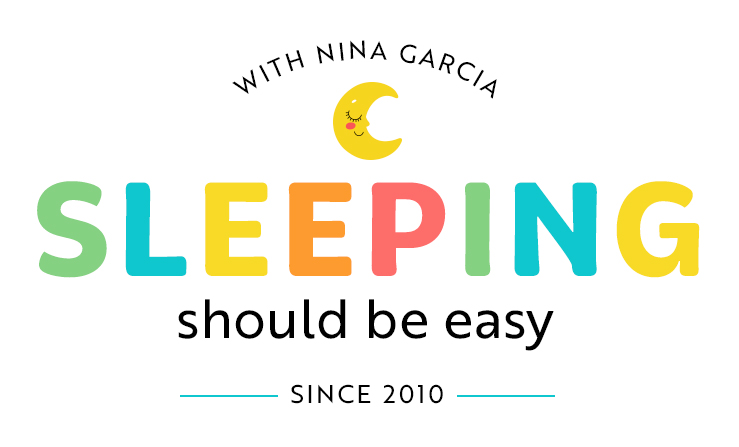How to Stop Giving Your Child Empty Threats
How many times have you threatened your kids with a consequence, only to not actually enforce it? Learn how to avoid giving empty threats.
 “If you don’t stop, we’re not going to the park!” I hollered at my kids. They had been fighting over a toy, for what seemed like the tenth time that day.
“If you don’t stop, we’re not going to the park!” I hollered at my kids. They had been fighting over a toy, for what seemed like the tenth time that day.
But instead of instant submission—or even a pause—they refused to listen. The threat of not going outside to play wasn’t enough to get them to stop fighting.
Sure, they may have been too involved to fully grasp the threat, or maybe not going to the park wasn’t enough of a motivation to stop.
But the more likely reason they didn’t listen? I was the parent who cried wolf.
We’ve all made bold claims we don’t enforce, from throwing unkempt toys away to cancelling a trip to an amusement park.
At first, this seems to “work.” Their ears perk up when they hear intense consequences they don’t want to happen.
But not only are we usually spouting off these empty threats when we’re upset, we’re relying on fear-based parenting to get kids to listen. Plus, as I’m sure you’ve noticed, the threats eventually wear off, especially as they call our bluff and realize we don’t mean our word.
And perhaps that’s the biggest downside to empty threats? The more we don’t follow through, the less self-integrity we have. They need to feel reassured that we adults will stick by what we say, but empty threats, well… threaten that important bond.
Still… there is a way to get them to behave, all without blasting empty threats. They may not always be “model children,” but they’ll listen when we apply these methods instead:
Table of Contents
1. Explain why the behavior isn’t acceptable
Let’s say your child refuses to go to bed. You might be tempted to claim, “If you don’t go to sleep, I’m going to take away all your stuffed animals!”
Instead of these empty threats, what if you simply explained why going to bed is important? That fighting sleep keeps her from feeling well-rested, or that she’ll have a good day tomorrow, or even that her mind and body need to recharge.
Giving her a reason makes her more likely to listen because it removes the power struggles between the two of you. The reason itself warrants a logic to comply, instead of you just telling her what to do because you’re the adult.
Free resource: Do you struggle with getting your kids to listen? Discover the ONE effective word to get them to listen and follow instructions. Grab your PDF below—at no cost to you. You’ll also get my newsletters, which parents say they LOVE:
“I just wanted to give a quick shout out that I love your newsletters. They’re such a great reminder of how I really want to be with my kids, and even if it’s not easy to always do in reality, it’s always good to have it in the back of my mind. Thanks for all the wonderful content!” -Tova Levy
2. Redirect to an appropriate activity
“Watch this!” my son exclaimed, as he spun around a few inches away from his little brother. I tried to hide the fear on my face that he was about to knock over his brother. Thankfully, I was able to switch gears and redirect him instead.
“Spin over here,” I told him, pointing to an area in the living room with nobody nearby for him to trip over and hit.
Instead of threatening with a consequence, redirect your child to an appropriate activity that honors the impulse. You don’t even have to tell her to stop what she’s doing when you guide her to a more appropriate way to do so.
Telling my son to stop spinning makes the action—spinning—seem wrong. It isn’t, just as jumping or yelling or rough housing aren’t. These actions just need appropriate situations, and spinning near his brother wasn’t one of them.
Read more about redirecting children’s behavior.

3. Give natural consequences
Allow the natural consequences of your child’s behavior to “teach” the lesson, more so than bold claims that don’t even relate.
Let’s say she continues to sprinkle play dough bits all over the carpet, despite your asking her not to do so. You might think taking away her favorite stuffed animal will do the trick, but it has nothing to do with her sprinkling play dough bits.
Instead, take away—you guessed it—her play dough, even just for the next hour. You might say, “It looks like you’re not being responsible with the play dough right now. I’m going to put it away until later when you know how to better play with it.”
Similarly, you can have her clean the play dough bits herself before she can move on to the next activity. You can say, “You really enjoy sprinkling play dough bits, but it’s getting messy. You’ll need to clean up your mess before we have a snack.”
The consequence—not having play dough or having to clean it up—is a natural result of the choices she’s making.
Learn more about natural consequences for kids.

4. Follow through with consequences
Perhaps the biggest reason empty threats stop working? We stopped (or never started) following through with the consequences.
Not going to an amusement park can get your kids to stop fighting, but they’ll hear you say the same types of threats without actually enforcing them. In other words, they stop taking you seriously.
Beyond getting them to listen, following through sends the message that you mean our word. They need to know that they can rely on you and the promises you make. That you’ll always pick them up from school, play with them when you say you will, and yes, enforce the consequences you claim.
Keep your word, no matter how inconvenient leaving the grocery, confiscating a toy, or cancelling plans to the park may be.
Read more about why you need to follow through with consequences.

5. Stick to doable consequences
We’re tempted to paint these grand consequences hoping they’ll convince our kids to behave. It may have even worked a few times in the beginning. But after a while, they’ll catch on and won’t take us seriously.
Telling your child you’re going to take away all his toys may not be the best idea if you still want him to have those toys to play with. Likewise, threatening not to take him on your next vacation is clearly an empty threat when you know you’re not going to do that.
Instead, choose simple consequences you can enforce. If you don’t want to leave the family party because of his outburst, go to a quiet room instead.
6. Avoid numbered warnings
“When I count to three, you had better stop it.” Sound familiar?
I’m not a fan of the 1-2-3 warning method. If kids are misbehaving or need to listen to their parents, they need to do so without three (three!) “grace periods.” Counting to three minimizes the necessity or the gravity of what they’re doing.
Counting also leads them to think they still have three opportunities to misbehave. That they don’t have to listen until you announce the final warning.
A more effective approach is to give them a “heads up.” If you plan to leave the park, let your them know you’ll be leaving in 10 minutes. They’ll transition smoothly when you don’t announce leaving all of a sudden.
As I say in my book, 31 Days to Better Parenting:
“Change can be difficult for many of us, including kids. It’s especially challenging when a child is enjoying herself and doesn’t want to move on to the next activity. Or perhaps she’s so used to her daily routine that she’s suspicious of anything that might disrupt it. And sometimes, change is just overwhelming.”
If they still won’t listen, simply stop the action—no need for counting. If they’re throwing food, don’t say, “I’m going to count to three and you better stop throwing food by then.”
A better option is to do something else so they stop throwing food in the first place, like taking away the food or removing them from the table. Your swift action—not counting to three—sends the message that you have zero tolerance for throwing food on the floor.
Conclusion
The risk of blasting empty threats rises the more they’re used—we’ll be far more productive working with our kids on their underlying issues.
For starters, explain why your child’s behavior isn’t acceptable, and redirect him to a more appropriate activity. Give natural consequences that tie to his choices, especially doable ones you can actually follow through with. And finally, avoid numbered warnings, as they diminish the gravity of the situation.
You can get him to listen—all without being the parent who cried wolf.
Get more tips:
- How to Rock a Morning Routine for Toddlers
- What to Do when Your Kids Don’t Listen to You in Public
- How to Discipline a Toddler Who Doesn’t Listen
- What to Do when Your Kids Refuse to Do Chores
Don’t forget: Join my newsletter and grab your PDF below—at no cost to you:

